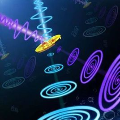Secure Delegated Quantum Computation (SDQC) protocols are a vital piece of the future quantum information processing global architecture since they allow end-users to perform their valuable computations on remote quantum servers without fear that a malicious quantum service provider or an eavesdropper might acquire some information about their data or algorithm. They also allow end-users to check that their computation has been performed as they have specified it. However, existing protocols all have drawbacks that limit their usage in the real world. Most require the client to either operate a single-qubit source or perform single-qubit measurements, thus requiring them to still have some quantum technological capabilities albeit restricted, or require the server to perform operations which are hard to implement on real hardware (e.g isolate single photons from laser pulses and polarisation-preserving photon-number quantum non-demolition measurements). Others remove the need for quantum communications entirely but this comes at a cost in terms of security guarantees and memory overhead on the server's side. We present an SDQC protocol which drastically reduces the technological requirements of both the client and the server while providing information-theoretic composable security. More precisely, the client only manipulates an attenuated laser pulse, while the server only handles interacting quantum emitters with a structure capable of generating spin-photon entanglement. The quantum emitter acts as both a converter from coherent laser pulses to polarisation-encoded qubits and an entanglement generator. Such devices have recently been used to demonstrate the largest entangled photonic state to date, thus hinting at the readiness of our protocol for experimental implementations.
翻译:暂无翻译




